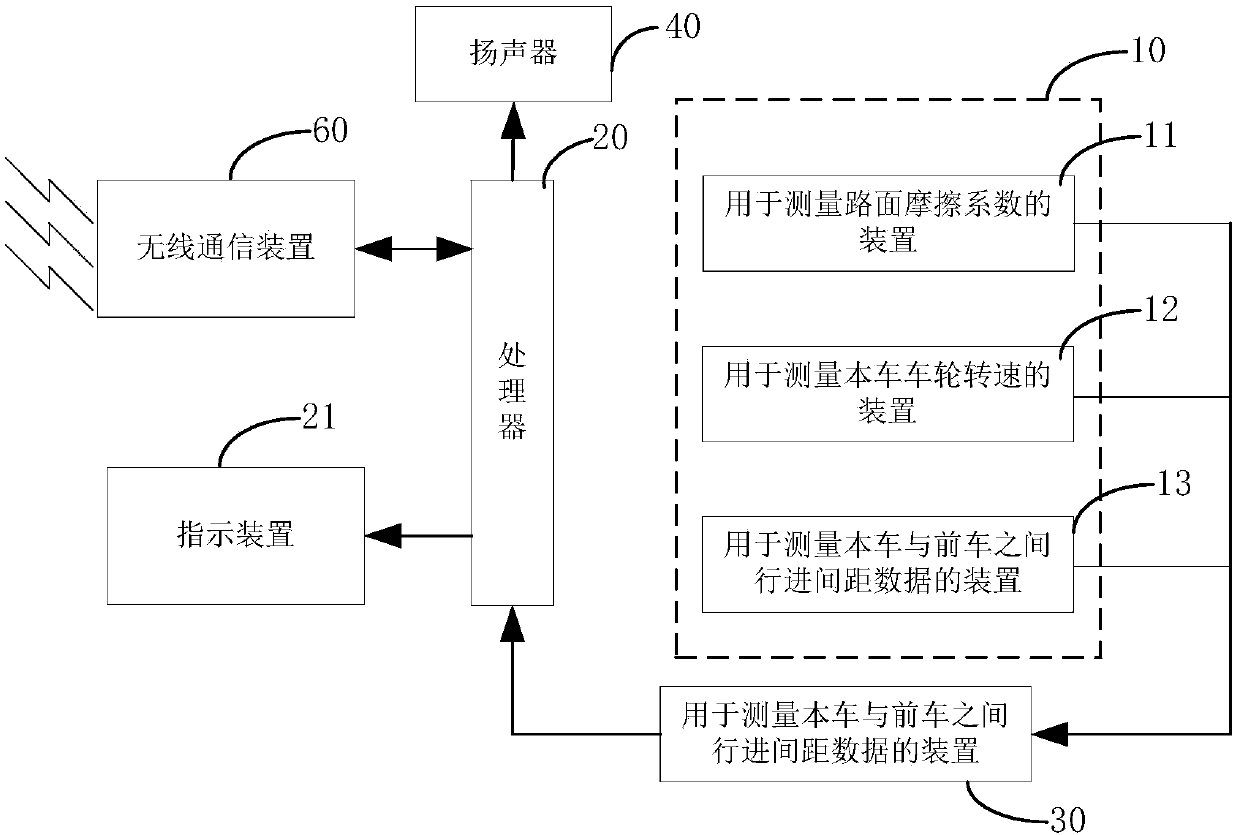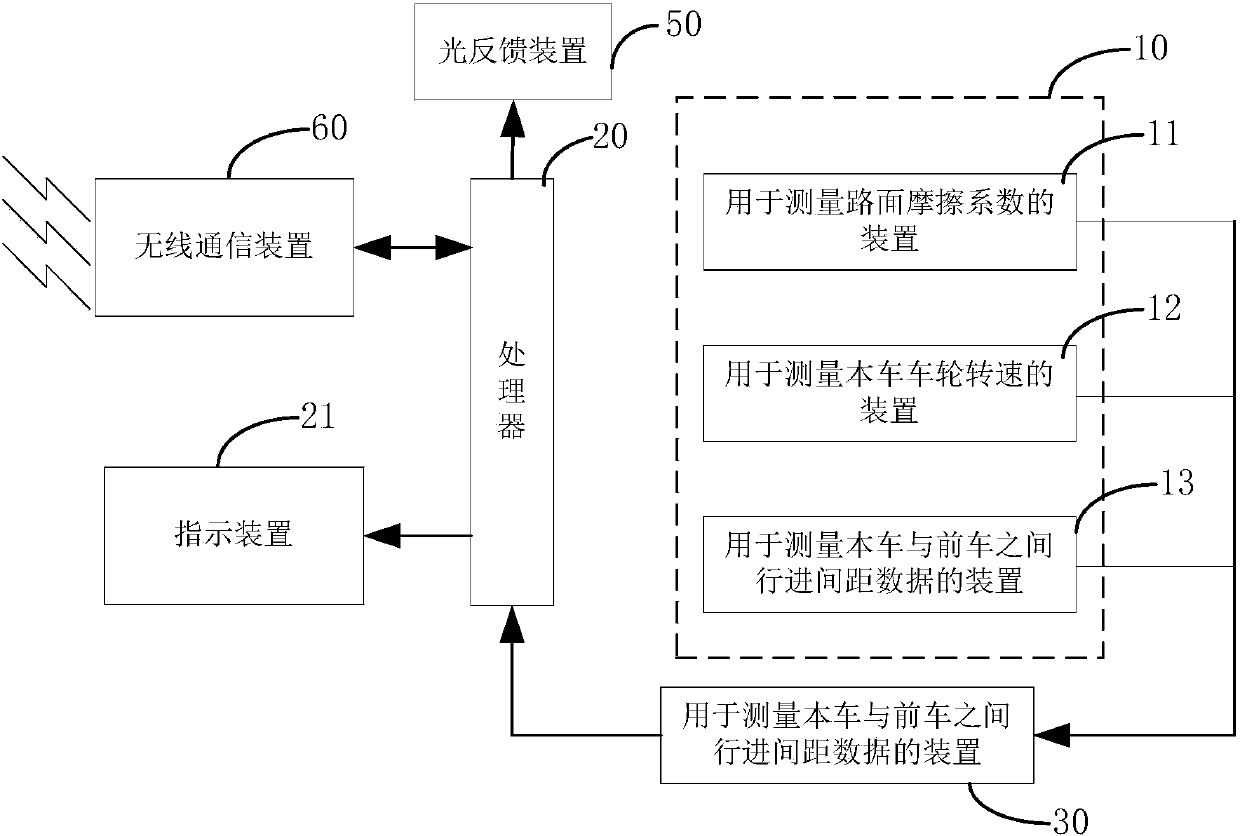Warning method and system for vehicle tailgating
A rear-end collision warning and vehicle technology, which is applied in anti-collision systems and other directions, can solve the problems such as the inability to solve the problem of vehicle rear-end collision prevention on highways, and the large error of distance measurement, so as to improve timeliness and continuity, small amount of calculation, and strong scalability Effect
- Summary
- Abstract
- Description
- Claims
- Application Information
AI Technical Summary
Problems solved by technology
Method used
Image
Examples
Embodiment Construction
[0037] In order to better understand the technical content of the present invention, specific embodiments are given together with the attached drawings for description as follows.
[0038] Such as figure 1 As shown, according to a preferred embodiment of the present invention, a vehicle rear-end warning method, its realization includes the following steps:
[0039] Step 1. Based on the predetermined time interval, collect vehicle travel data in continuous time series through the on-board acquisition device: the distance information between the vehicle and the vehicle in front, the speed information and acceleration information of the vehicle during driving, and the driving road surface friction coefficient information, wherein the vehicle where the vehicle-mounted acquisition device is located is the vehicle;
[0040] Step 2. Based on a certain sequence time t collected in step 1 i with the previous sequence time t i-1 The vehicle distance information Sq i 、Sq i-1 , the cur...
PUM
 Login to View More
Login to View More Abstract
Description
Claims
Application Information
 Login to View More
Login to View More - R&D
- Intellectual Property
- Life Sciences
- Materials
- Tech Scout
- Unparalleled Data Quality
- Higher Quality Content
- 60% Fewer Hallucinations
Browse by: Latest US Patents, China's latest patents, Technical Efficacy Thesaurus, Application Domain, Technology Topic, Popular Technical Reports.
© 2025 PatSnap. All rights reserved.Legal|Privacy policy|Modern Slavery Act Transparency Statement|Sitemap|About US| Contact US: help@patsnap.com



